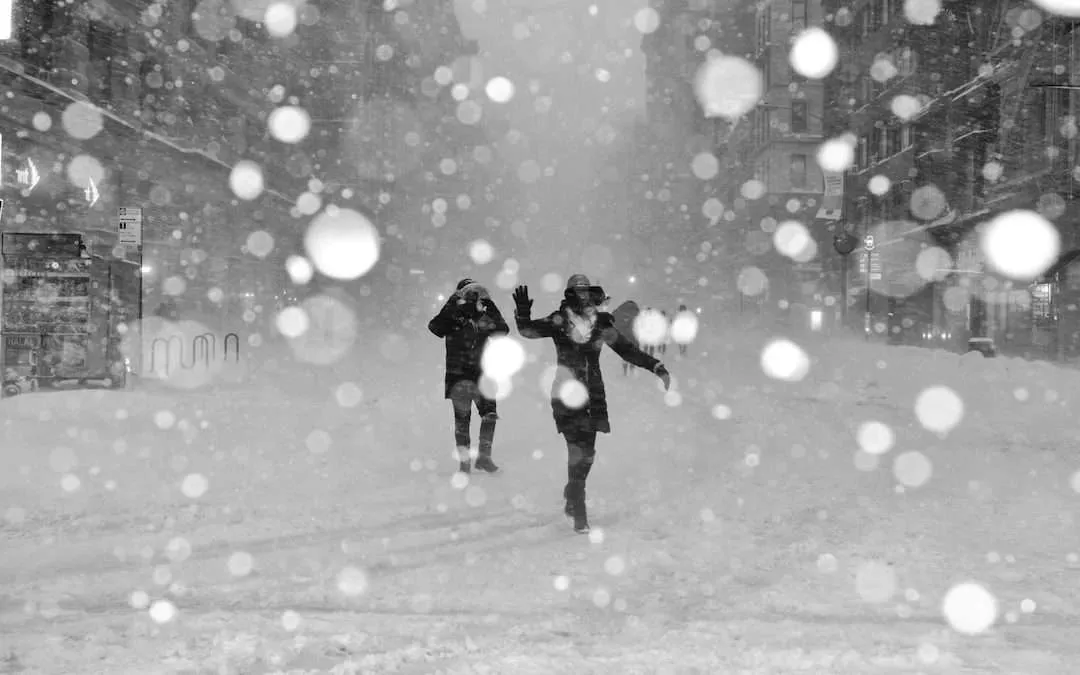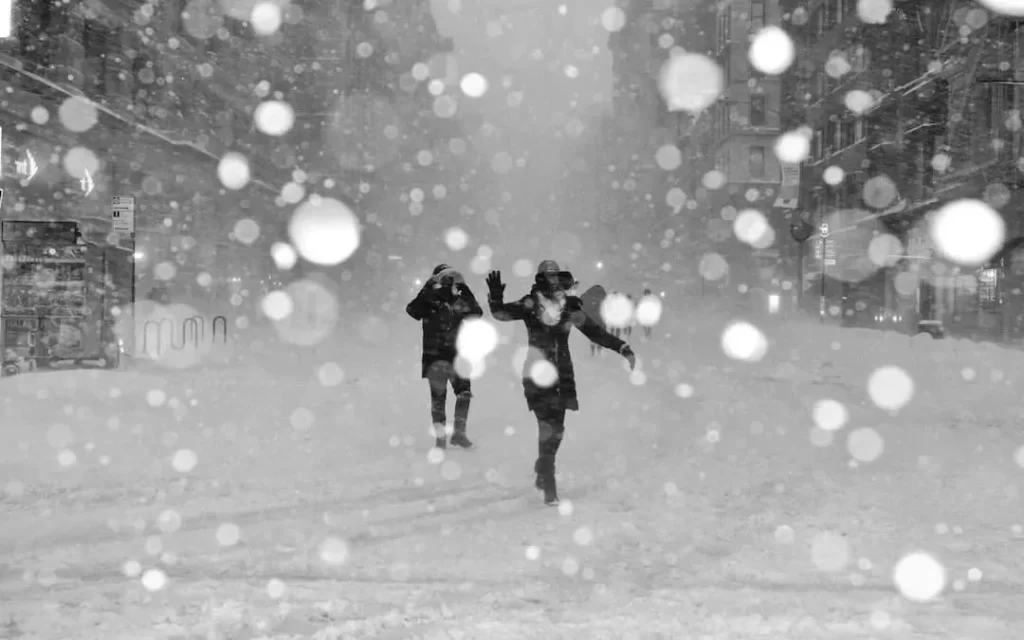Colorado is becoming a hotbed for extreme winter weather events, which include heavy snowstorms to hailstorms. These weather phenomena have significant impacts on insurance premiums and claims throughout the state [1]. For homeowners, understanding these impacts is not only crucial but also integral in making informed decisions regarding insurance coverage. In this article, we will explore the various factors affecting the insurance landscape in Colorado. We will delve into the rising cost of home insurance, the cost implications of heavy snowstorms, the threat posed by hailstorms, the impact of extreme weather and climate change on insurance rates, common winter weather-related insurance claims, and the future of home insurance in the state.
The increasing frequency of these extreme weather events has led to a critical need for a comprehensive understanding of the dynamics of insurance costs and claims in Colorado. This understanding is essential not only for homeowners but also for insurance companies and policymakers who are tasked with creating an enabling environment for homeowners to protect their properties and investments.
The Rising Cost of Home Insurance in Colorado
Over the past three years, home insurance costs in Colorado have surged dramatically.There has been an over 50% increase, which is largely attributed to escalating wildfire risk, fluctuating market conditions, and inflation. Such challenges have saddled Colorado with the dubious distinction of being the third worst in the nation for insurance profitability.
In a bid to mitigate these challenges, the Colorado government has implemented the Fair Access to Insurance Requirements plan. This innovative plan is designed to provide coverage for homeowners who find themselves unable to procure insurance in the private marketplace. In addition, mitigation initiatives such as fireproofing homes and communities have been rolled out. Such efforts are geared towards reducing risks and subsequently lowering insurance rates.
The Cost of Heavy Snowstorms in Colorado
Heavy snowstorms can be financially draining for Colorado homeowners. The Blizzard of March 2003 stands as a stark reminder of the potential cost of such weather events.It was documented as the most expensive winter storm in Colorado history, causing extensive damage to roofs, structures, and resulting in numerous downed trees.
Looking forward, the prediction of El Nino bringing heavier snows to Colorado in 2023 is a cause for concern. This weather pattern may potentially lead to increased insurance costs. Homeowners should therefore factor in the possibility of such increases when planning for their home insurance coverage.
Hailstorms in Colorado: A Significant Threat
Hailstorms in Colorado pose a significant threat, so much so that the state has been aptly dubbed “Hail Alley”. The 2017 hailstorm, which resulted in costs of $2.3 billion, is a prime example of the financial repercussions of such weather events. In light of this, homeowners are heavily advised to take preventive measures. These include installing hail-resistant roofs and properties, removing accumulated snow on roofs, and ensuring gutters are clean.
Extreme Weather and Climate Change Impact on Insurance Rates
In Colorado, approximately one-quarter of properties could face higher insurance premiums or risk policy non-renewals due to the threat of wildfires or flooding. Insurance companies are responding to these climate and extreme weather risks by adjusting their premiums and coverage. Some insurers have even taken the drastic step of dropping policyholders due to the growing risk of wildfire and wind damage. Areas such as the Front Range, particularly El Paso and Larimer counties, face the greatest potential impact.
Common Winter Weather-Related Insurance Claims
In Colorado, the top three winter weather-related insurance claims are for frozen pipes, ice dams, and fallen trees [4]. Homeowners can minimize the damage and the ensuing claims by taking preventive measures. These include insulating pipes to prevent freezing, and adding insulation to prevent ice dams [4].In the unfortunate event that damage does occur, homeowner’s insurance can provide coverage, helping to alleviate the financial burden.
Impact of Winter Storms on Insurance Claims
Colorado is no stranger to costly winter storms, with the Blizzard of March 2003 being a prime example. In addition to direct damage, the state’s building market also plays a role in the rising cost of insurance claims following winter storms. By taking precautions such as keeping homes warm to prevent frozen pipes and notifying local officials of clogged drains, homeowners can minimize storm-related damage.
Colorado’s Homeowners Insurance Market
Despite the potential financial risks posed by hailstorms and increased wildfire threats, Colorado’s homeowners insurance market remains competitive and stable. However, homeowners in higher-risk areas may face the reality of having to pay higher premiums or switch to specialized insurance companies. The importance of homeowners undertaking fire mitigation efforts is being increasingly recognized by both insurance companies and communities.
Non-Renewals and Cancellations in Colorado’s Insurance Market
While there is no evidence of widespread homeowners insurance cancellations and non-renewals in Colorado, certain instances may trigger non-renewal. For instance, if a property no longer meets underwriting guidelines, a non-renewal may occur. However, it is important to note that insurance companies cannot cancel a policy that has been in force for more than 60 days, although they can opt for non-renewal.
The Role of Mitigation in Insurance
For homeowners in Wildland-Urban Interface (WUI) areas, undertaking fire mitigation efforts has become more of a requirement than an option to maintain their insurance. Insurance companies and communities are increasingly forming partnerships to implement model mitigation programs. These partnerships are instrumental in ensuring insurance renewals and maintaining a stable insurance market.
The Future of Home Insurance in Colorado
As climate change continues to reshape our world, it is also making home insurance harder to obtain and more expensive.This is a result of the increasing cost of disasters and rising temperatures. Insurers and state regulators are actively exploring strategies for managing climate risks and building more resilient homes. One such strategy could be restricting development in high-risk areas, which may help curb the rise in insurance losses.
In recent years, Colorado has seen an increasing frequency of extreme winter weather events, from heavy snowfall to hailstorms. These weather changes have a significant impact on everyday life, impacting commuting, outdoor activities, and how residents prepare for the winter season. But perhaps more critically, these weather fluctuations profoundly influence insurance premiums and claims. Understanding how winter weather impacts insurance in Colorado is crucial for homeowners looking to safeguard their property and finances. In this article, we will examine the various ways winter weather affects insurance in the state, from raising premiums to increasing claims.
By examining the rising cost of home insurance, the threat of hailstorms, the impact of extreme weather and climate change on insurance rates, and common winter weather-related claims, we can gain a deeper understanding of the insurance landscape in Colorado. Additionally, we will delve into how winter storms affect insurance claims and the current state of Colorado’s homeowners insurance market. We will also explore prevalent issues of non-renewals and cancellations, the role of mitigation in insurance, and what the future holds for home insurance in the state.
The Rising Cost of Home Insurance in Colorado
Data shows that home insurance costs in Colorado have surged by over 50% in the last three years. This rise in costs is due in large part to escalating wildfire risk, changing market conditions, and inflation. Colorado’s insurance profitability is ranked third worst in the nation, which is a significant concern for both homeowners and insurance companies. To support homeowners who struggle to obtain insurance on the private marketplace due to these challenges, Colorado has implemented the Fair Access to Insurance Requirements plan.
In addition to these measures, mitigation efforts are gaining popularity as a tool for reducing risk and lowering insurance rates. These efforts include fireproofing homes and communities, which can significantly reduce the likelihood of property damage due to wildfires. By implementing such measures, homeowners can protect their properties from potential damage and potentially reduce their insurance premiums.
Hailstorms in Colorado: A Significant Threat
Colorado, known as “Hail Alley,” sees hail as a significant source of loss. The state has a long history of costly hailstorms, such as the $2.3 billion hailstorm that occurred in 2017. These incidents have led to substantial insurance claims, making hail a major concern for insurance companies. To mitigate the impact of hailstorms, homeowners are encouraged to invest in hail-resistant roofs and property.
Moreover, preventive measures, such as removing snow accumulation on roofs and cleaning gutters, can help avert hail-related damage. For instance, heavy snow accumulation can lead to roof collapse, while blocked gutters can cause water backup and damage to the home’s structure. By taking these steps, homeowners can protect their homes from hail damage and potentially reduce their insurance claims.
Extreme Weather and Climate Change Impact on Insurance Rates
Approximately one-quarter of properties in Colorado could face higher insurance premiums or policy non-renewals due to the risk of wildfires or flooding [2]. This is a significant concern, as extreme weather events and climate change risks are expected to increase in the future.As a response to these risks, insurers are adjusting their premiums and coverage based on climate and extreme weather risks, and some are even dropping policyholders due to the growing risk of wildfire and wind damage.
Areas such as the Front Range, particularly El Paso and Larimer counties, face the greatest potential impact. In these regions, homeowners may face higher insurance premiums or even non-renewal of their insurance policies. This further emphasizes the importance of understanding how climate change and extreme weather events can impact insurance rates and what measures homeowners can take to mitigate these risks.
Common Winter Weather-Related Insurance Claims
The severity of winter weather in Colorado often leads to specific types of insurance claims. These claims, which include frozen pipes, ice dams, and fallen trees [4], can cause significant damage to homes. For example, frozen pipes can lead to water damage, while ice dams can cause roof and structural damage. Fallen trees, often a result of heavy snowfall or wind, can also cause substantial damage to homes and other structures.
Fortunately, there are preventive measures homeowners can undertake to minimize these damages.These include insulating pipes to prevent them from freezing and adding insulation to attics to prevent ice dams. By taking these steps, homeowners can minimize the potential damage caused by these common winter weather issues. Furthermore, homeowner’s insurance can help cover damage caused by these issues, providing financial relief to homeowners.
Impact of Winter Storms on Insurance Claims
Winter storms can cause significant damage to property, leading to high insurance claims. A prime example is the Blizzard of March 2003, which was the most expensive winter storm in Colorado’s history. The storm caused extensive damage to roofs, structures, and downed trees, leading to high insurance claims.
To minimize storm-related damage, homeowners can take precautions like keeping homes warm to prevent frozen pipes and notifying local officials of clogged drains. These measures can help prevent damage to homes and reduce the likelihood of costly insurance claims. However, it’s important to note that Colorado’s building market contributes to the rising cost of fixing and rebuilding homes after winter storms. This means that even with preventive measures in place, homeowners may still face significant repair costs following a severe winter storm.
Colorado’s Homeowners Insurance Market
Despite costly hailstorms and increased wildfire threats, Colorado has a competitive and stable insurance market. This stability is a testament to the resilience of the state’s insurance industry, even in the face of increasing natural disasters. However, homeowners in higher-risk areas may have to pay higher premiums or switch to specialized insurance companies. This reality underscores the importance of understanding one’s risk profile and choosing an insurance provider accordingly.
In addition to this, both insurance companies and communities recognize the importance of homeowners undertaking fire mitigation efforts. These efforts, which can include clearing brush around properties and installing fire-resistant roofing, can significantly reduce the risk of property damage. As a result, homeowners who undertake these measures may be rewarded with lower insurance premiums.
Non-Renewals and Cancellations in Colorado’s Insurance Market
Despite fears to the contrary, there’s no evidence of widespread homeowners insurance cancellations and non-renewals in Colorado. In most cases, non-renewal can happen if a property no longer meets underwriting guidelines. These guidelines can include factors such as the property’s location, condition, and the homeowner’s claim history.
Insurance companies are also bound by regulation and cannot cancel a policy that has been in force for more than 60 days. However, non-renewal is possible if the insurer determines that the property or homeowner presents too high a risk. Understanding these factors can help homeowners manage their insurance policies more effectively and mitigate the risk of non-renewal or cancellation.
The Role of Mitigation in Insurance
For homeowners residing in the Wildland-Urban Interface (WUI), fire mitigation efforts may be required to maintain their insurance. These efforts can include measures such as clearing flammable vegetation from around the home and installing fire-resistant roofing materials. By undertaking these mitigation efforts, homeowners can significantly reduce the risk of fire damage to their properties and potentially lower their insurance premiums.
In addition to individual homeowners, insurance companies are also teaming up with communities to implement model mitigation programs. These programs, which can include community-wide efforts to reduce wildfire risk, can help ensure that insurance remains available and affordable for homeowners.
The Future of Home Insurance in Colorado
Looking ahead, climate change is expected to make home insurance harder to obtain and more expensive.This is due to the increasing cost of disasters and rising temperatures, which can increase the risk of wildfires and other natural disasters. As a result, insurers and state regulators are exploring strategies for managing these climate risks and building more resilient homes.
One potential solution is restricting development in high-risk areas. Such measures could help reduce the risk of property damage from natural disasters and potentially lower insurance costs. However, these strategies will require careful consideration and coordination between homeowners, insurance companies, and regulators. As we move forward, understanding the changing landscape of home insurance in Colorado will be critical for homeowners looking to protect their properties and finances.











